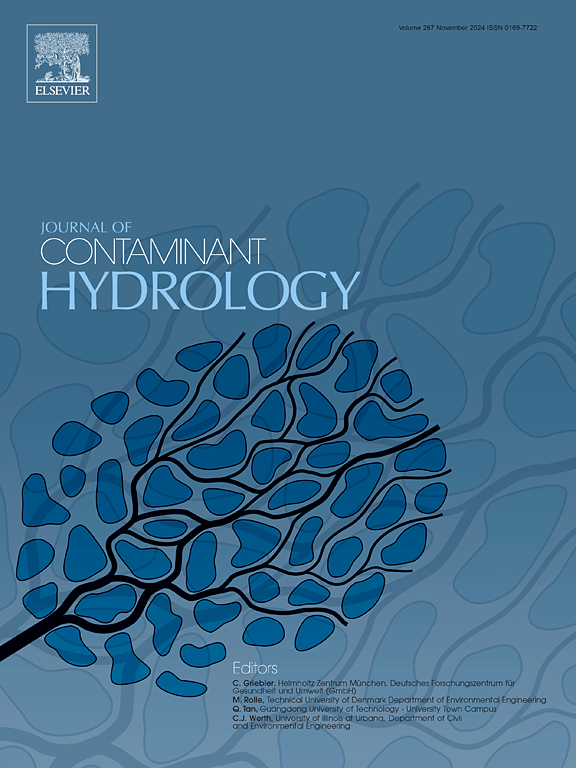Characterization of microplastics in sediments and surface waters of Turkish lakes
IF 3.5
3区 环境科学与生态学
Q2 ENVIRONMENTAL SCIENCES
引用次数: 0
Abstract
This study examined microplastic (MP) pollution in the sediments and surface waters of seven distinct lakes in Turkey, aiming to assess the status and characteristics of MP contamination. Hydrogen peroxide was introduced to eliminate organic matter present in the samples. MPs were separated and filtered using methods based on differences in density using ZnCl2 (d: 1.65 g cm−3) solution. Microplastics were subjected to Nile red staining observed using a fluorescent microscope, and subsequently, the types of polymers were identified through ATR-FTIR analysis. MP concentrations varied among lakes (p < 0.05), with Borçka Dam Lake (0.69 ± 0.65 MP L−1) exhibiting the highest levels in water, while Karagöl (Şavşat) Lake (344 ± 188 MP kg−1) showed the highest sediment contamination. Five distinct types of polymers were identified, with polyethylene and fragments being predominant in water, while polypropylene and fibers were more prevalent in sediment. The fibers predominantly measured less than 500 μm in length, whereas the fragments exhibited a more uniform distribution. The results indicate that microplastic pollution is prevalent in lake ecosystems, with human activities such as tourism, fishing, and urban waste discharge which have been identified as significant contributors. This study underscores the pervasive presence of microplastic pollution in protected areas and stresses the necessity for robust mitigation strategies to tackle the impacts of tourism on freshwater ecosystems. Additional investigations will elaborate on the precise origins, transport mechanisms, and ecological consequences of MPs, facilitating the formulation of efficient response strategies.
土耳其湖泊沉积物和地表水中微塑料的表征
本研究考察了土耳其七个不同湖泊的沉积物和地表水中的微塑料(MP)污染情况,旨在评估 MP 污染的现状和特征。采用过氧化氢消除样本中的有机物。使用 ZnCl2(d: 1.65 g cm-3)溶液,根据密度差异对 MP 进行分离和过滤。使用荧光显微镜对微塑料进行尼罗河红染色观察,然后通过 ATR-FTIR 分析确定聚合物的类型。不同湖泊的 MP 浓度各不相同(p < 0.05),其中 Borçka Dam 湖(0.69 ± 0.65 MP L-1)的水中浓度最高,而 Karagöl (Şavşat) 湖(344 ± 188 MP kg-1)的沉积物污染度最高。研究发现了五种不同类型的聚合物,水中主要是聚乙烯和碎片,而沉积物中则主要是聚丙烯和纤维。纤维的长度主要小于 500 μm,而碎片的分布较为均匀。研究结果表明,微塑料污染在湖泊生态系统中非常普遍,旅游业、渔业和城市废物排放等人类活动已被确定为主要污染源。这项研究强调了微塑料污染在保护区的普遍存在,并强调有必要采取强有力的缓解策略来应对旅游业对淡水生态系统的影响。其他调查将详细说明微塑料的确切来源、迁移机制和生态后果,从而有助于制定高效的应对策略。
本文章由计算机程序翻译,如有差异,请以英文原文为准。
求助全文
约1分钟内获得全文
求助全文
来源期刊

Journal of contaminant hydrology
环境科学-地球科学综合
CiteScore
6.80
自引率
2.80%
发文量
129
审稿时长
68 days
期刊介绍:
The Journal of Contaminant Hydrology is an international journal publishing scientific articles pertaining to the contamination of subsurface water resources. Emphasis is placed on investigations of the physical, chemical, and biological processes influencing the behavior and fate of organic and inorganic contaminants in the unsaturated (vadose) and saturated (groundwater) zones, as well as at groundwater-surface water interfaces. The ecological impacts of contaminants transported both from and to aquifers are of interest. Articles on contamination of surface water only, without a link to groundwater, are out of the scope. Broad latitude is allowed in identifying contaminants of interest, and include legacy and emerging pollutants, nutrients, nanoparticles, pathogenic microorganisms (e.g., bacteria, viruses, protozoa), microplastics, and various constituents associated with energy production (e.g., methane, carbon dioxide, hydrogen sulfide).
The journal''s scope embraces a wide range of topics including: experimental investigations of contaminant sorption, diffusion, transformation, volatilization and transport in the surface and subsurface; characterization of soil and aquifer properties only as they influence contaminant behavior; development and testing of mathematical models of contaminant behaviour; innovative techniques for restoration of contaminated sites; development of new tools or techniques for monitoring the extent of soil and groundwater contamination; transformation of contaminants in the hyporheic zone; effects of contaminants traversing the hyporheic zone on surface water and groundwater ecosystems; subsurface carbon sequestration and/or turnover; and migration of fluids associated with energy production into groundwater.
 求助内容:
求助内容: 应助结果提醒方式:
应助结果提醒方式:


